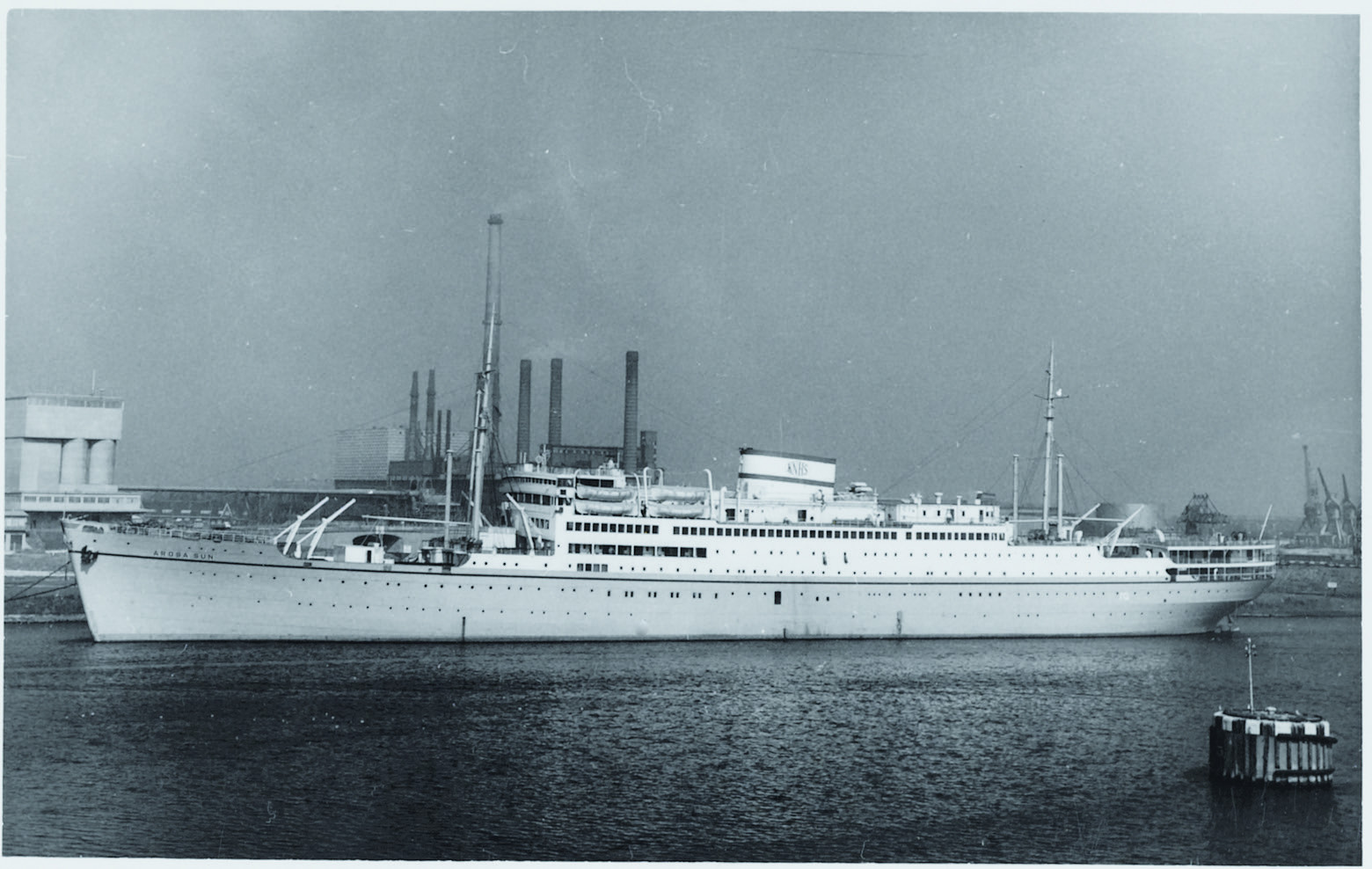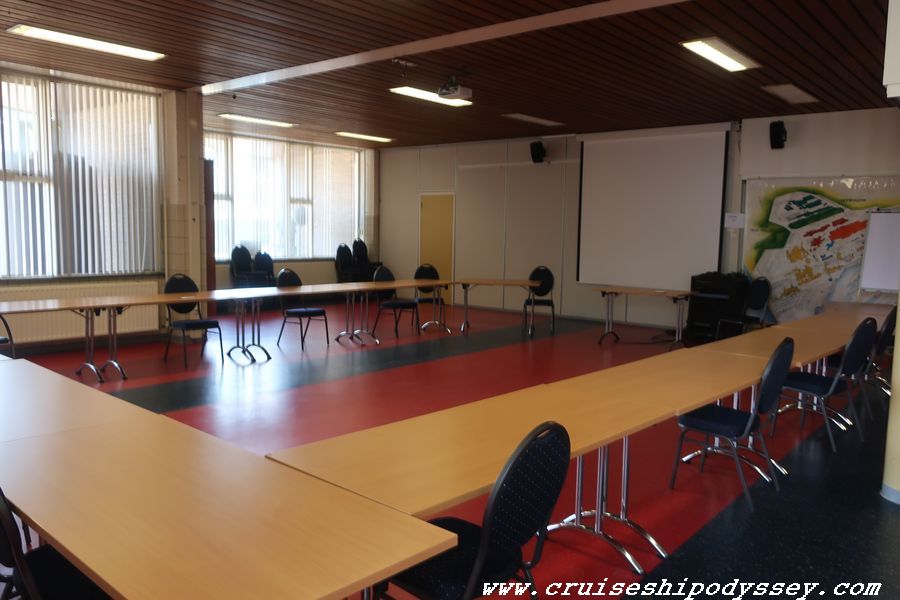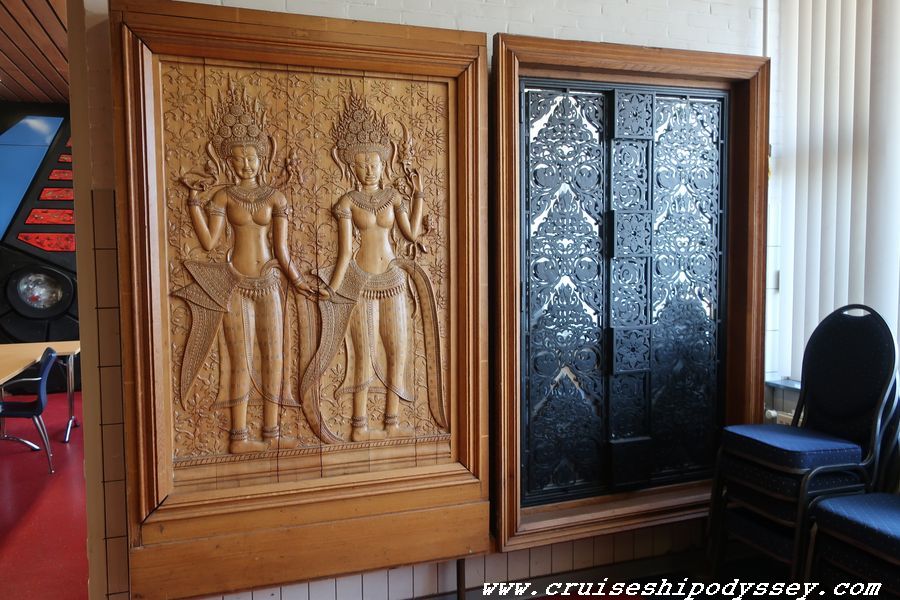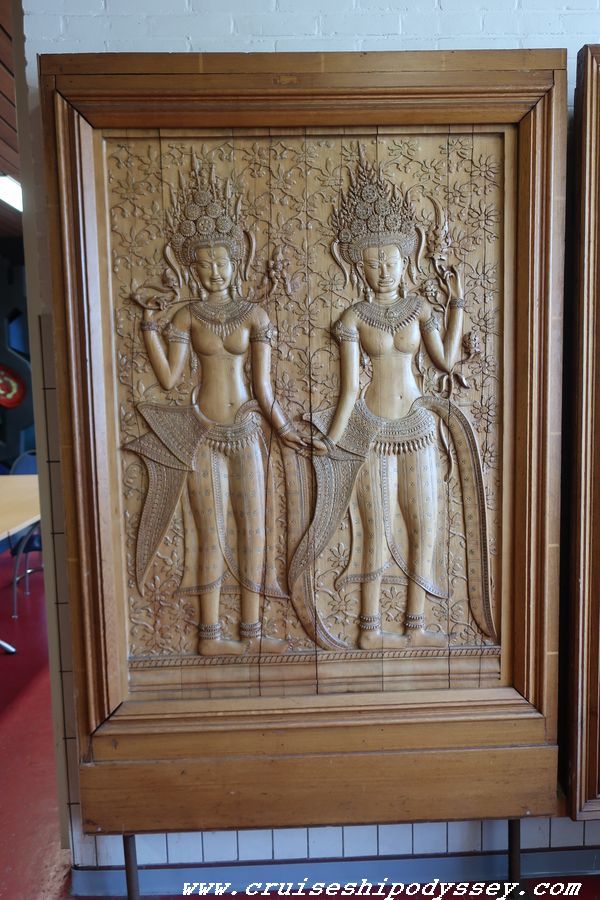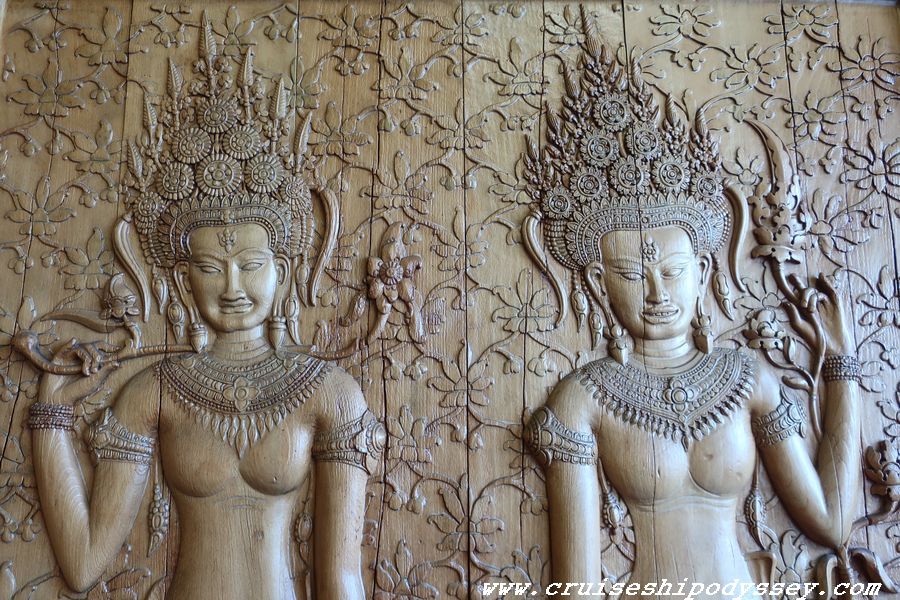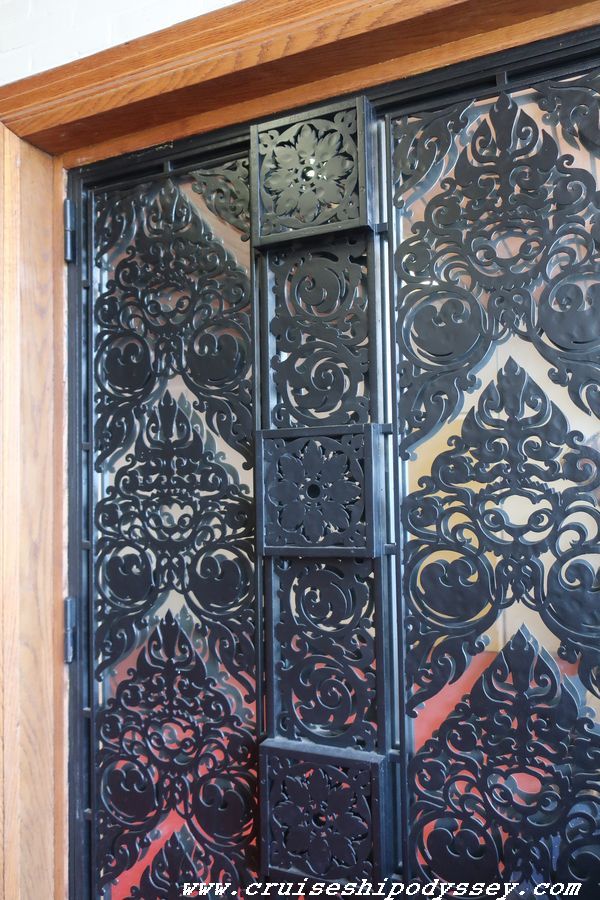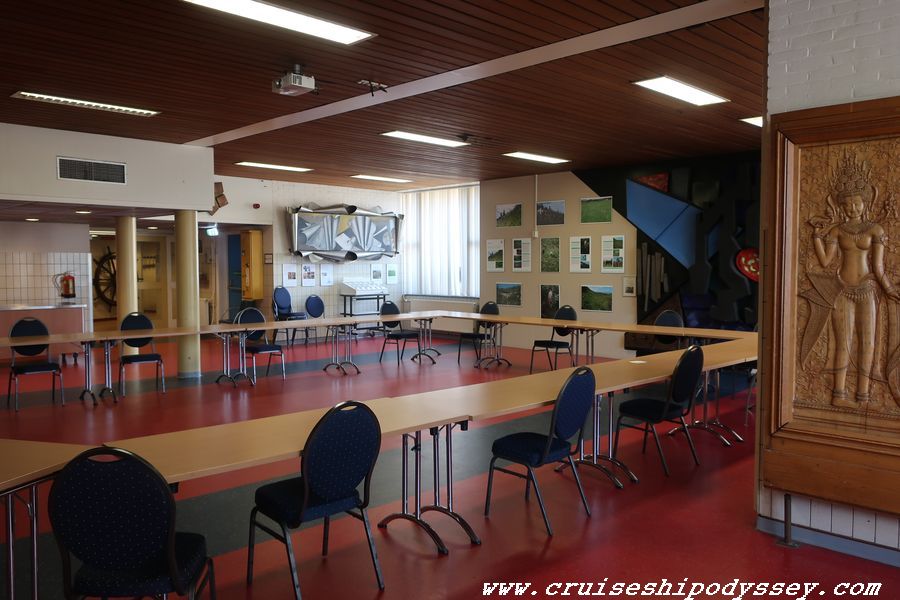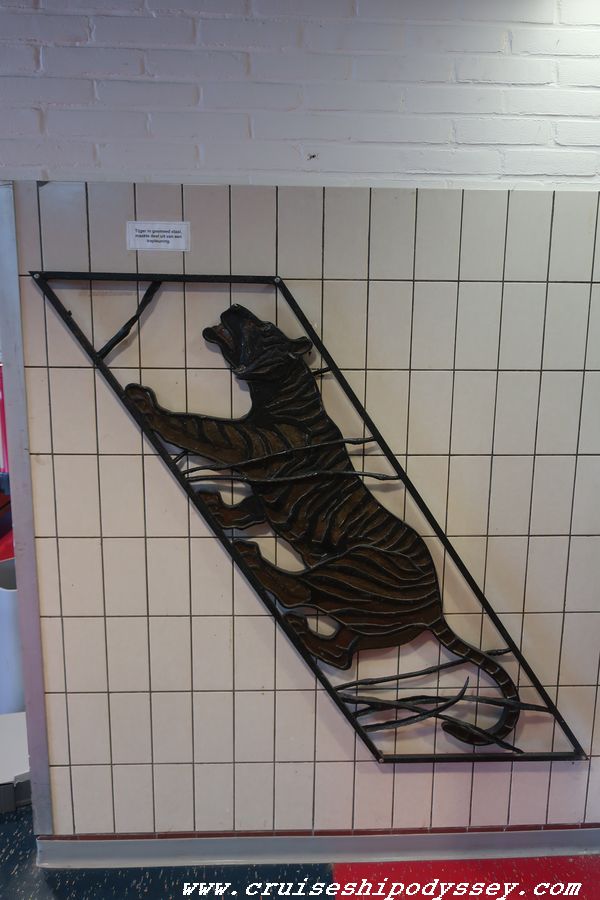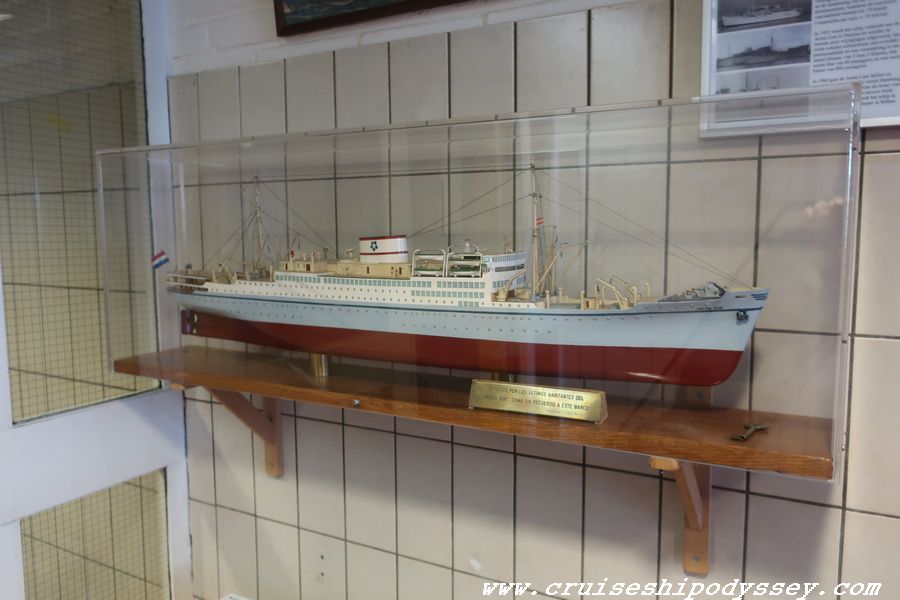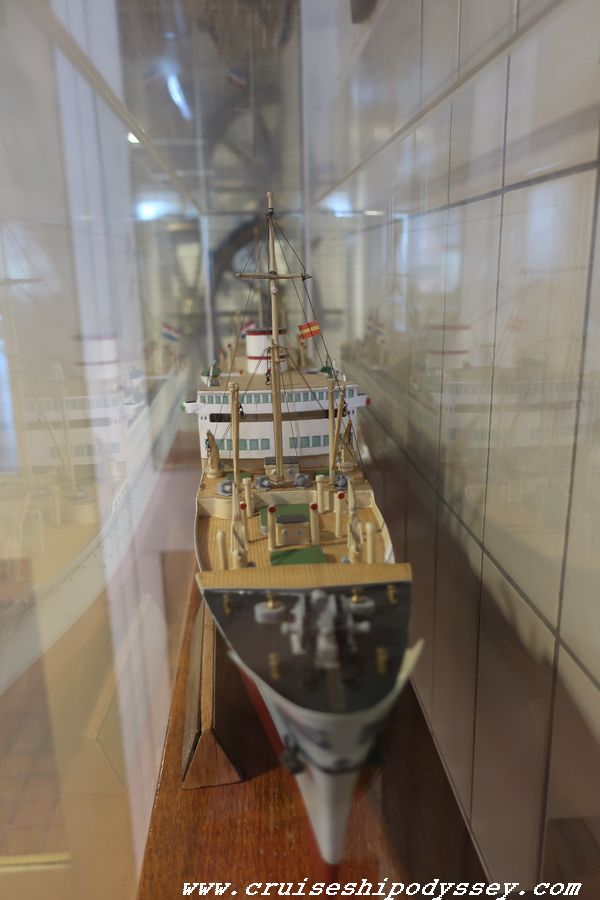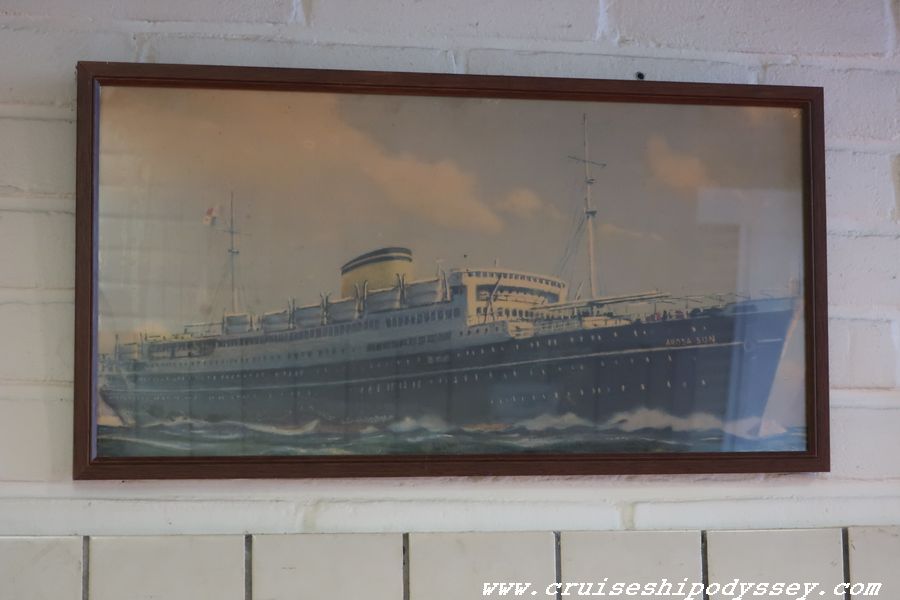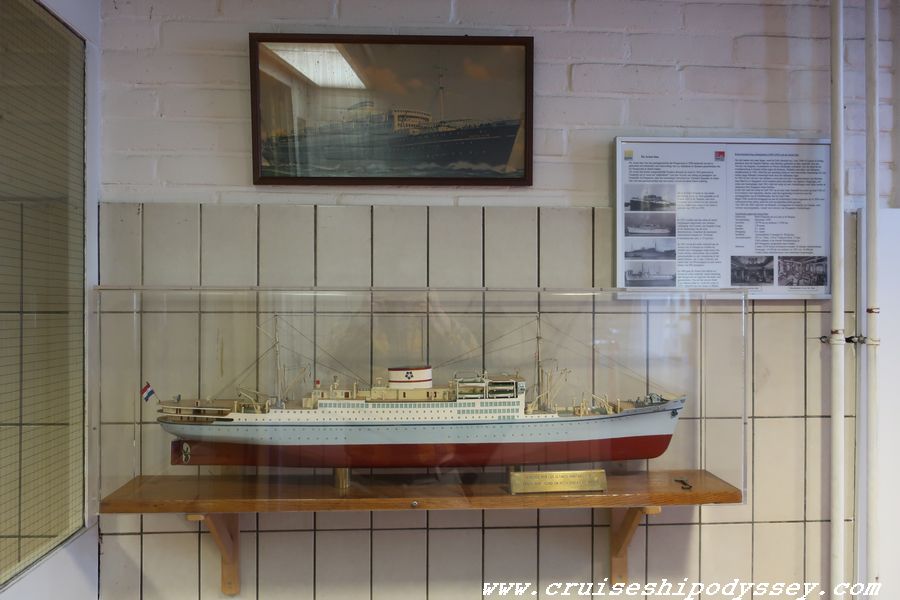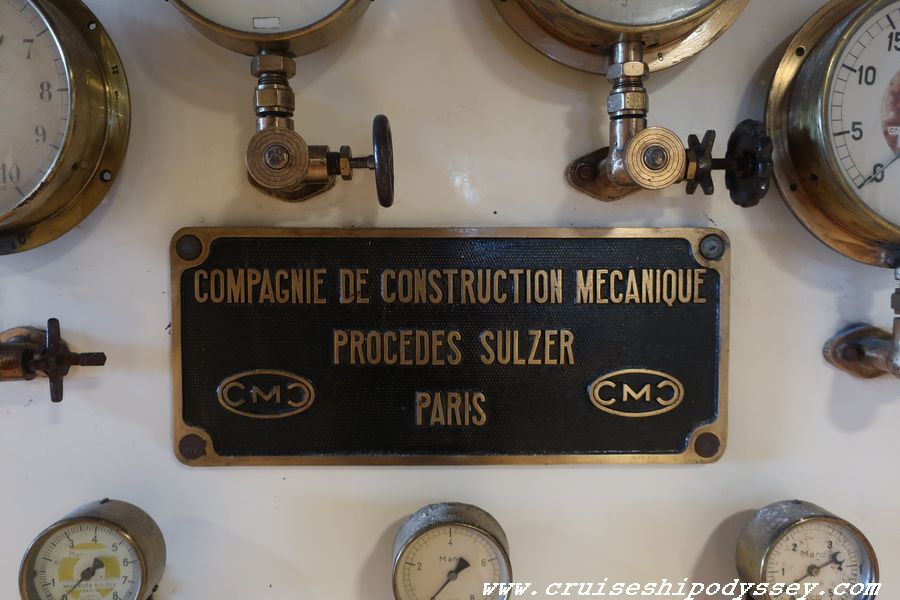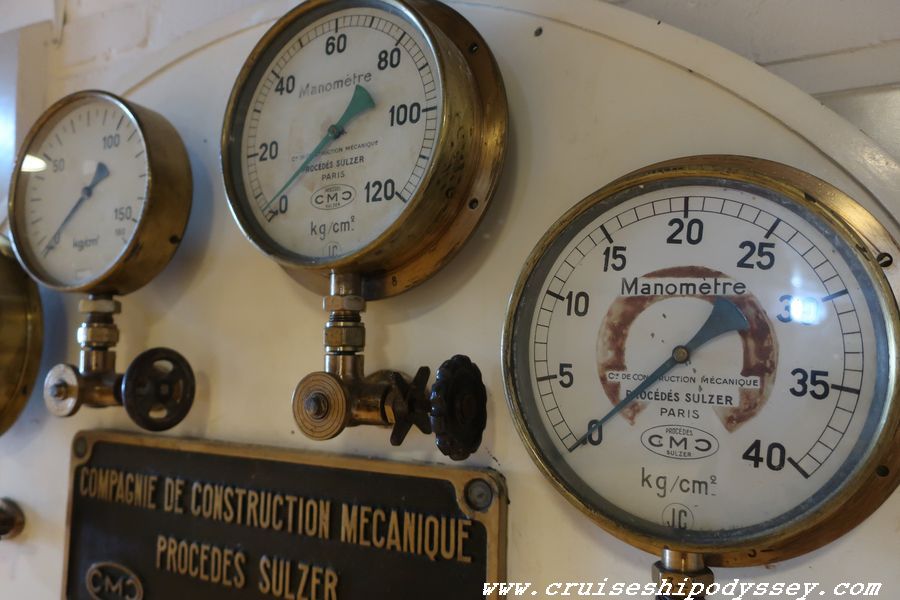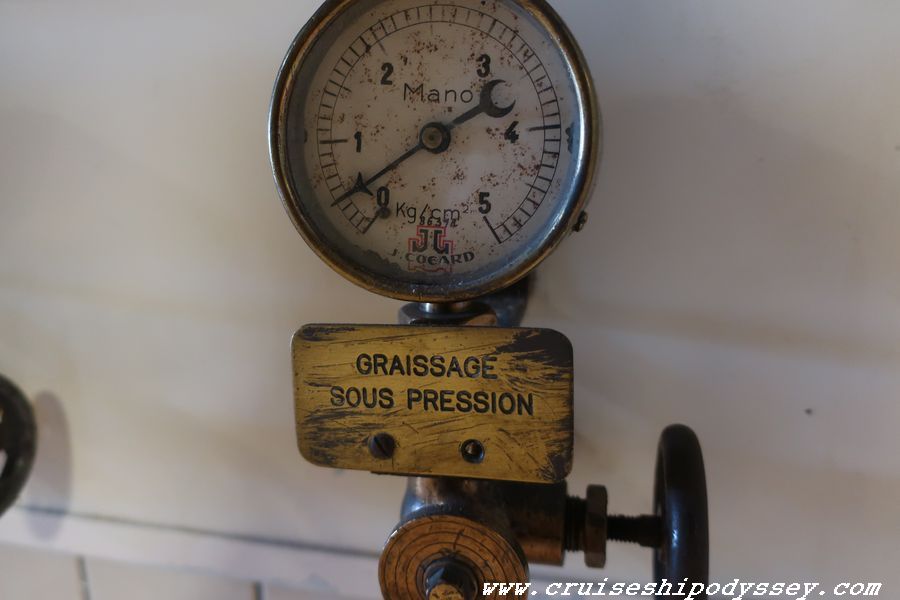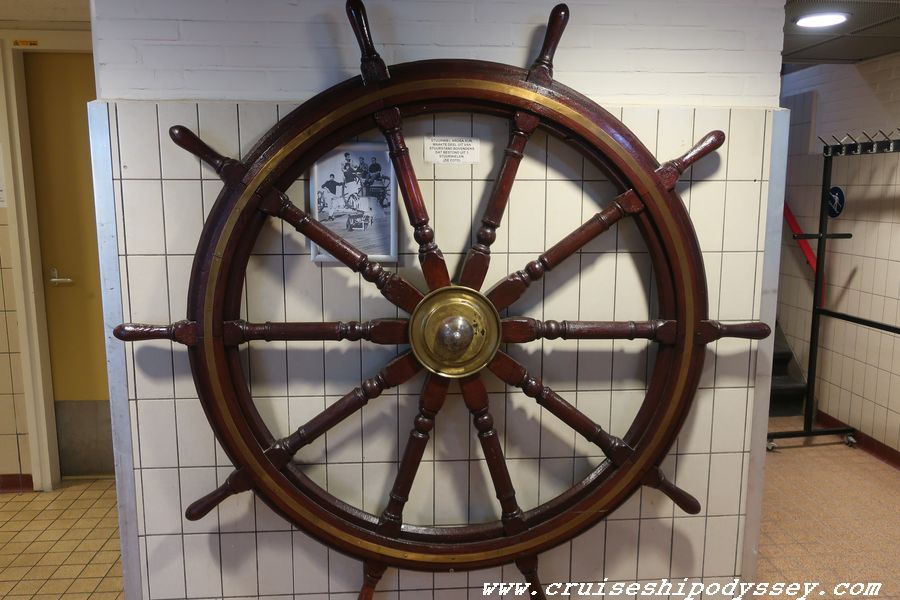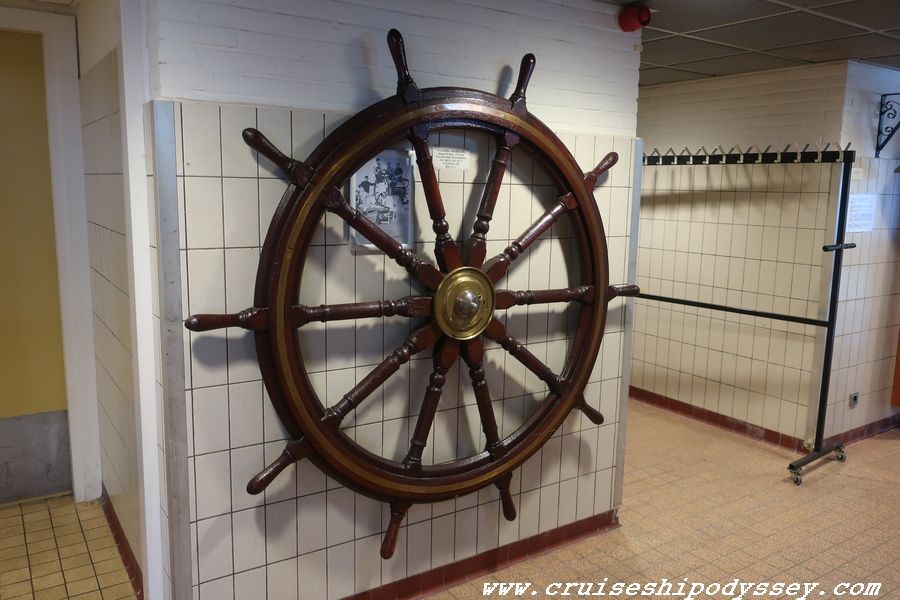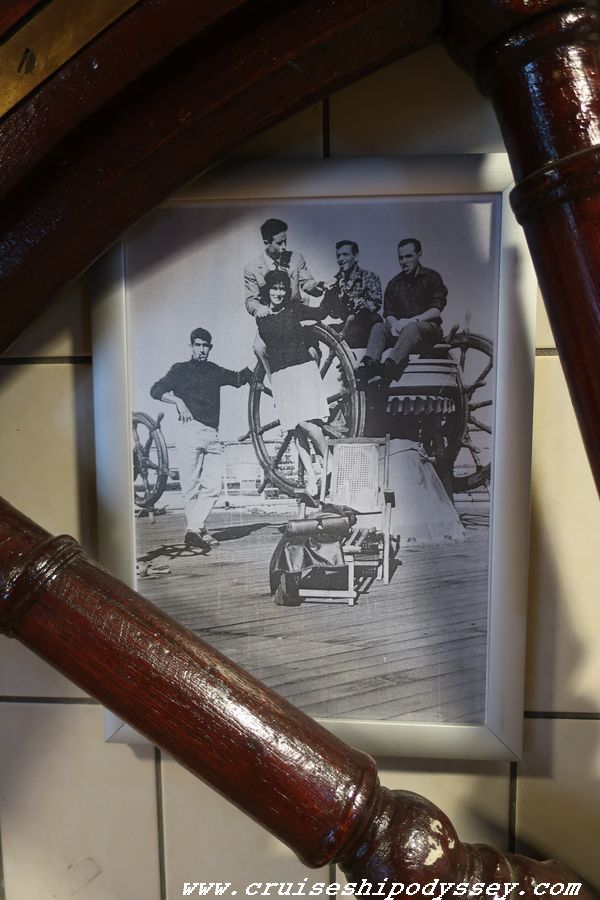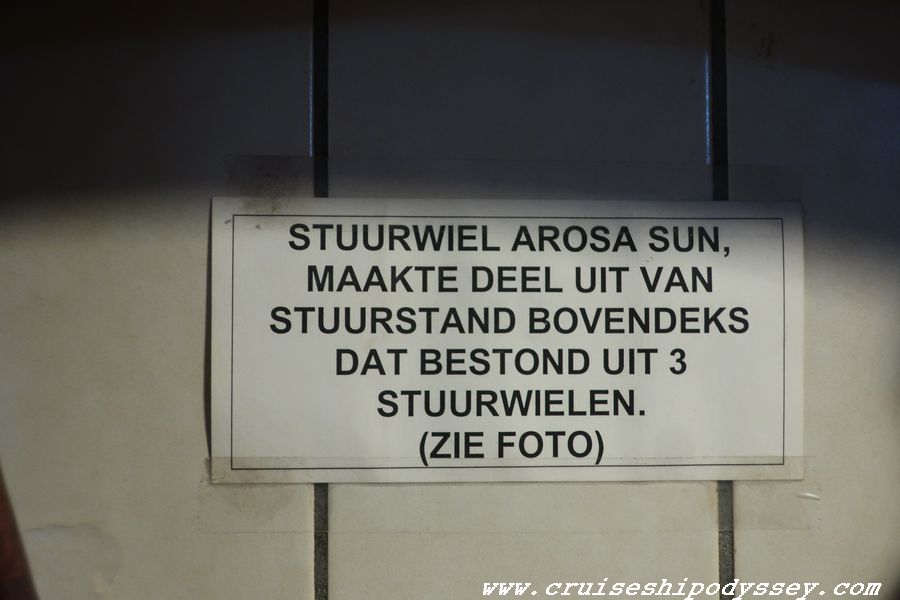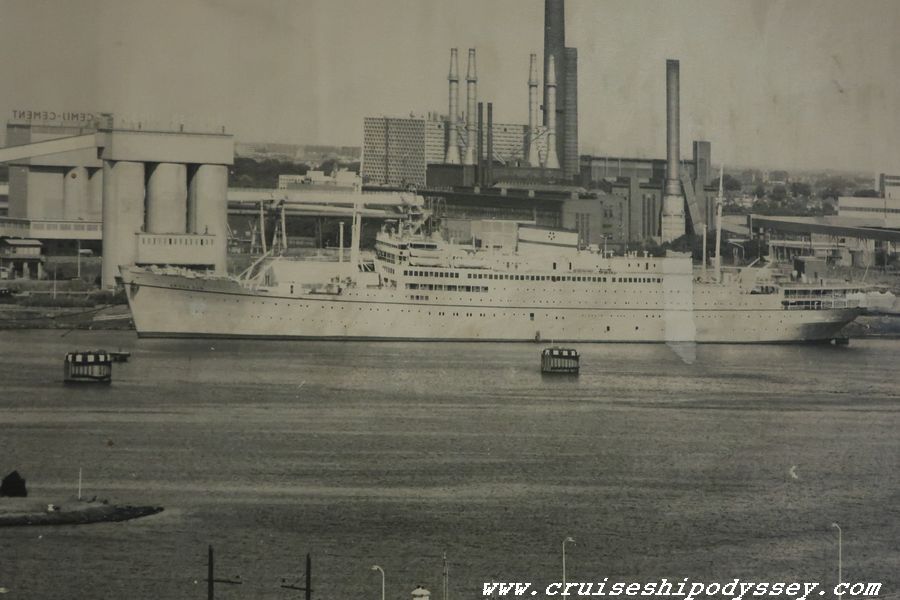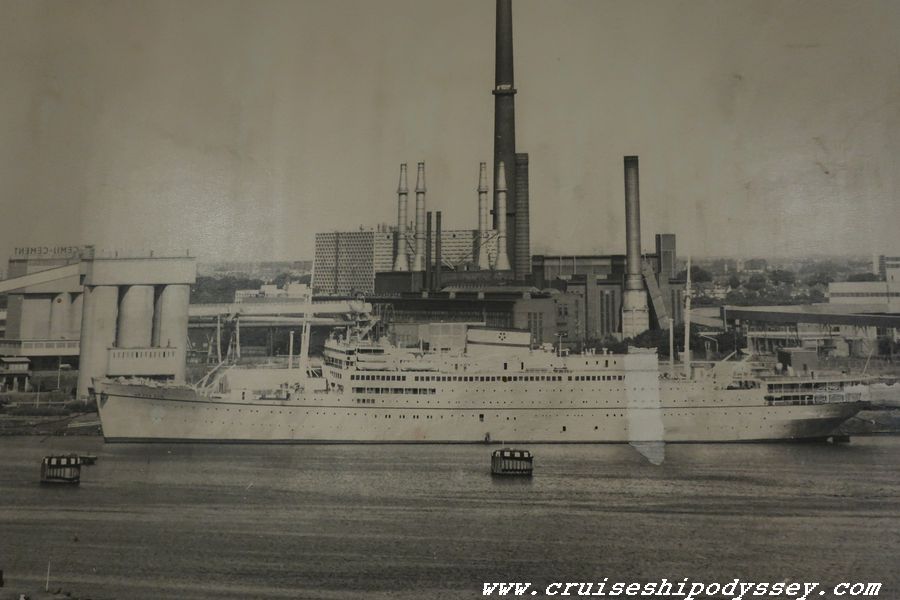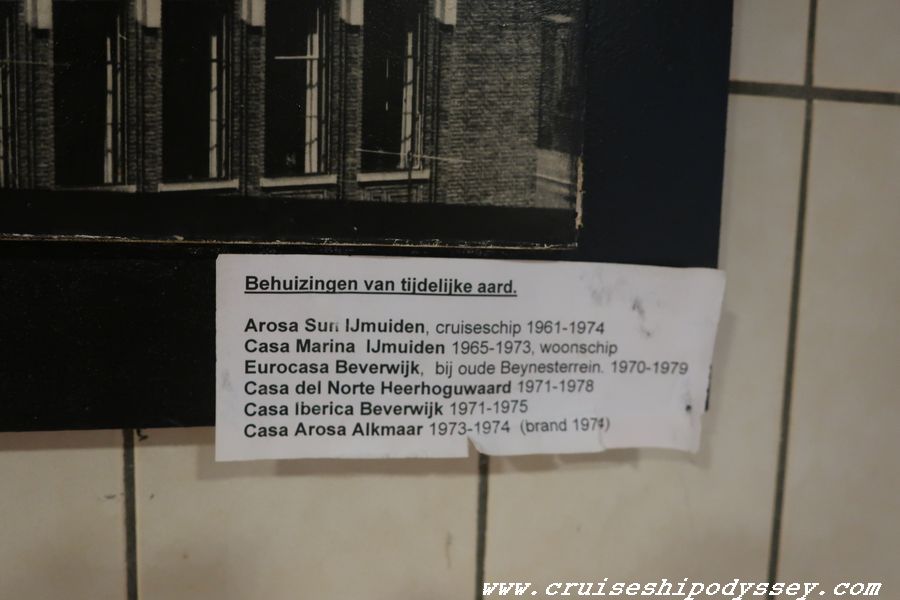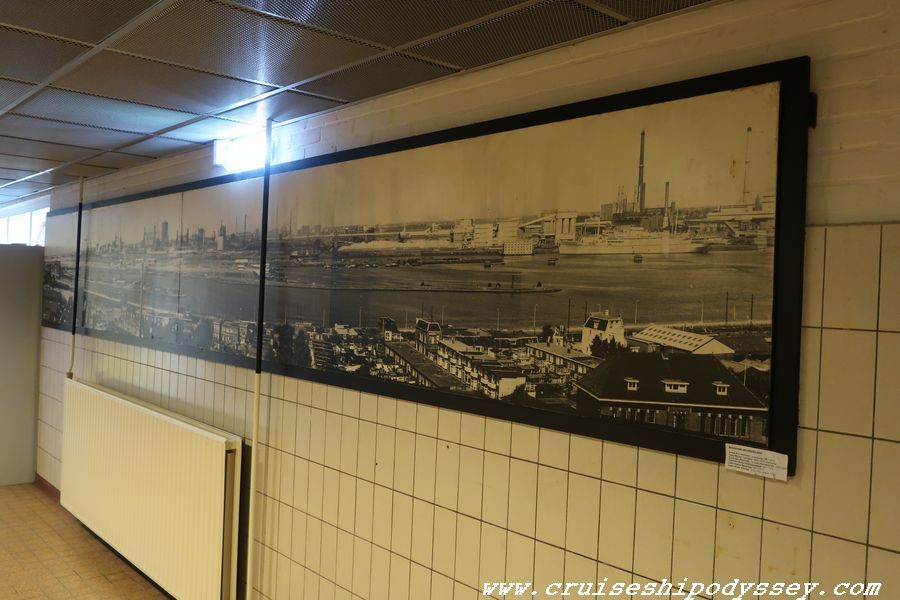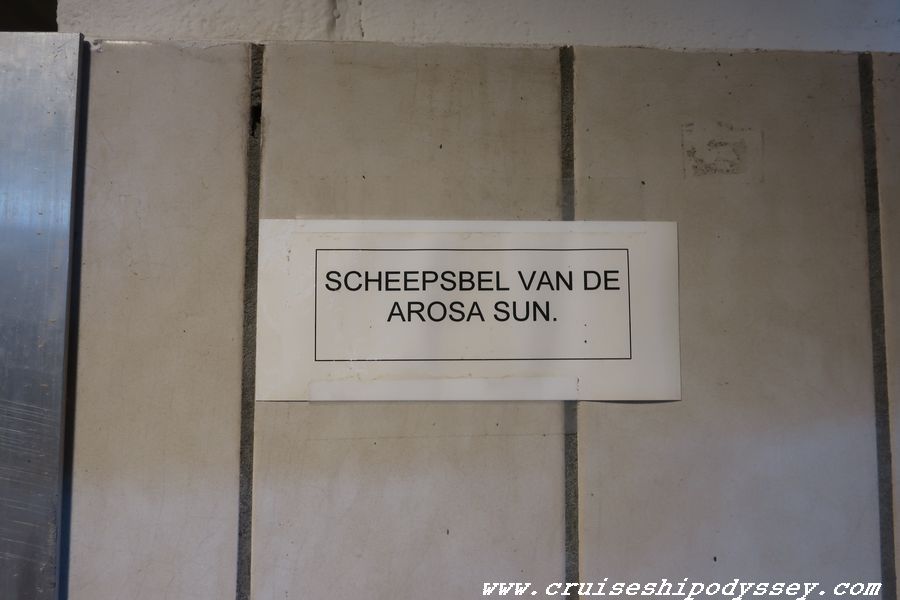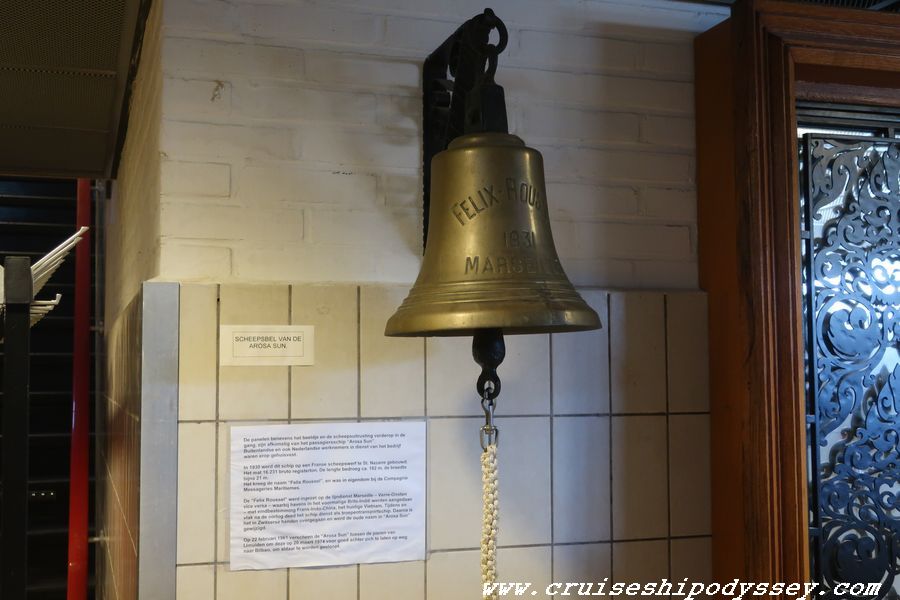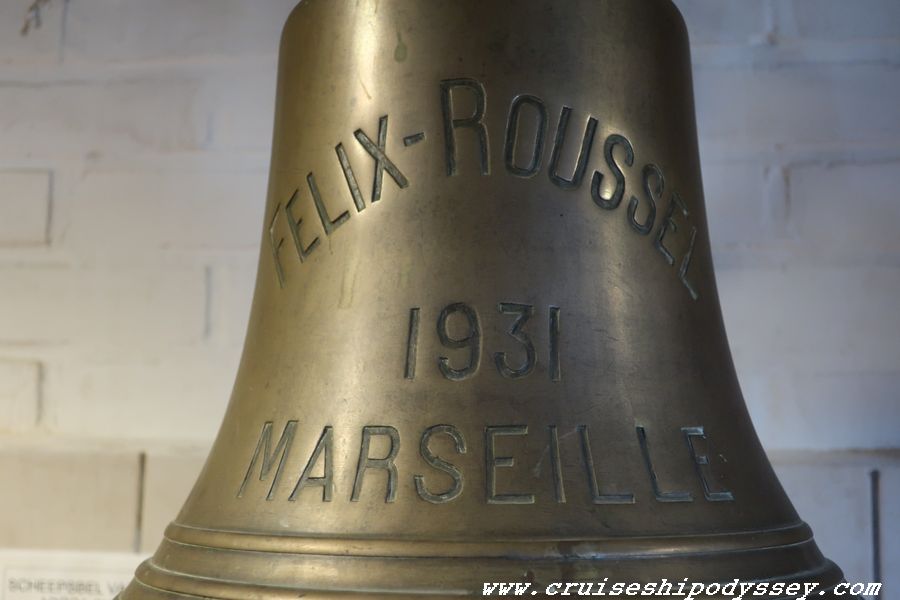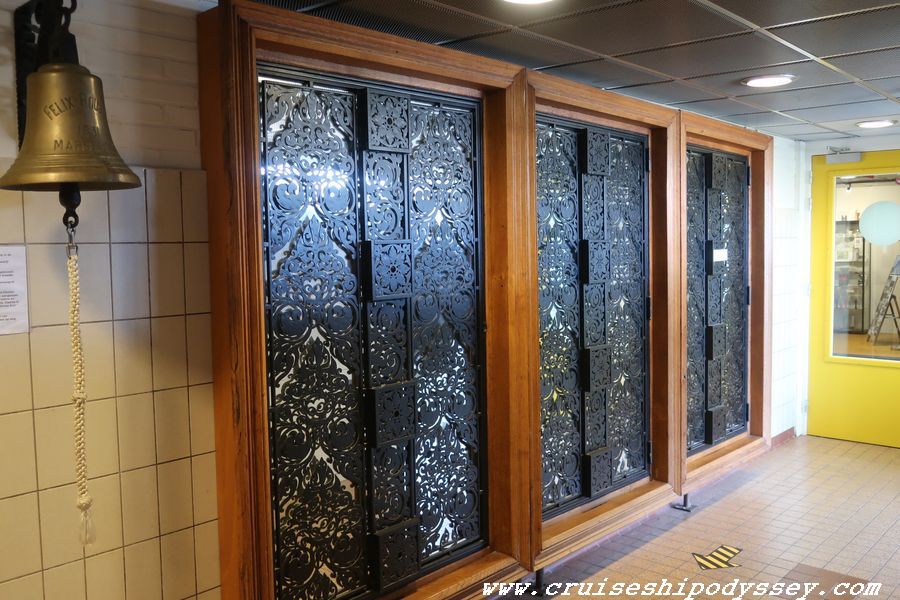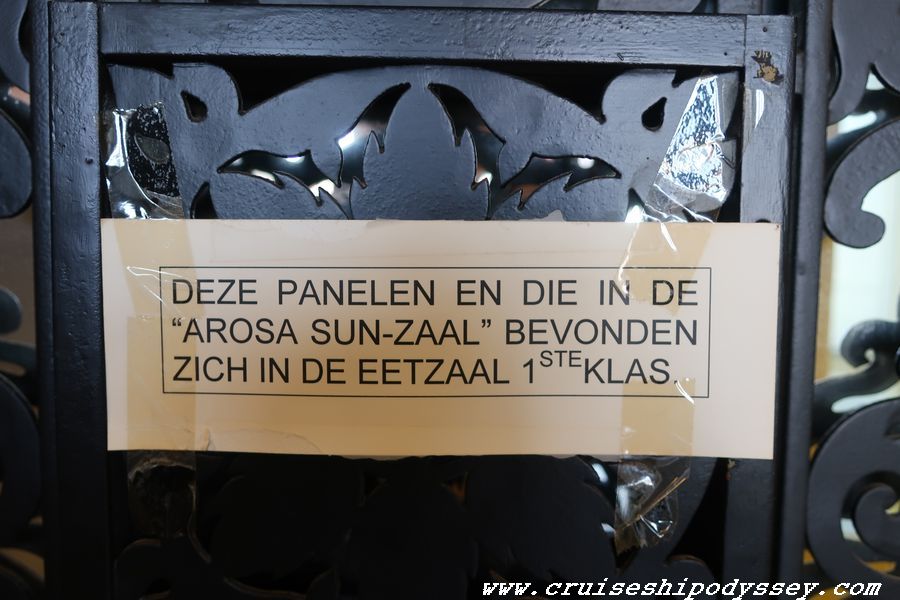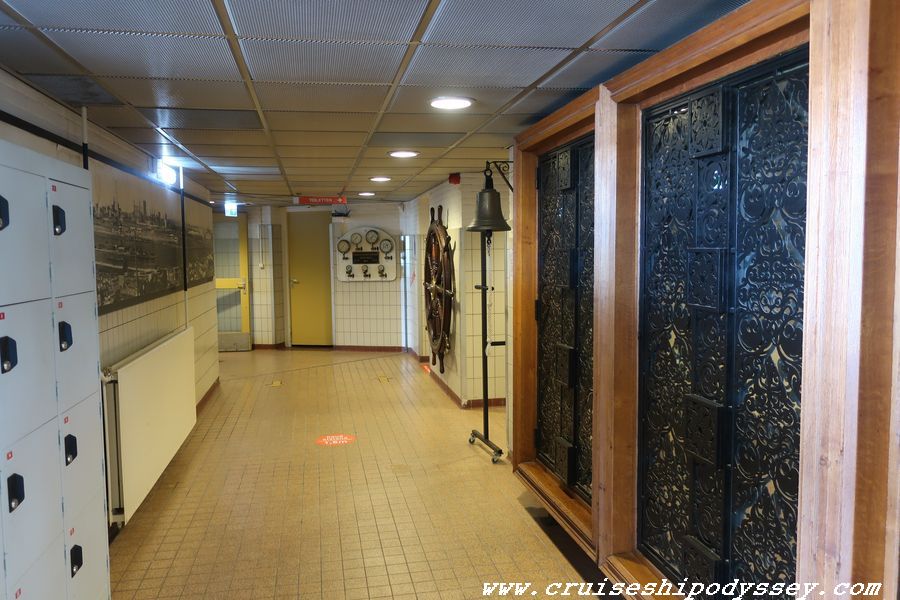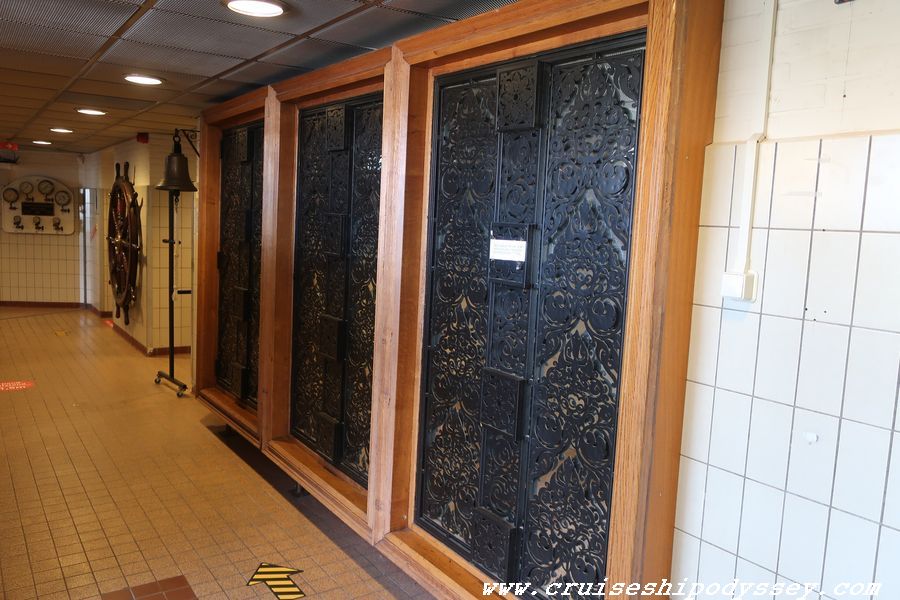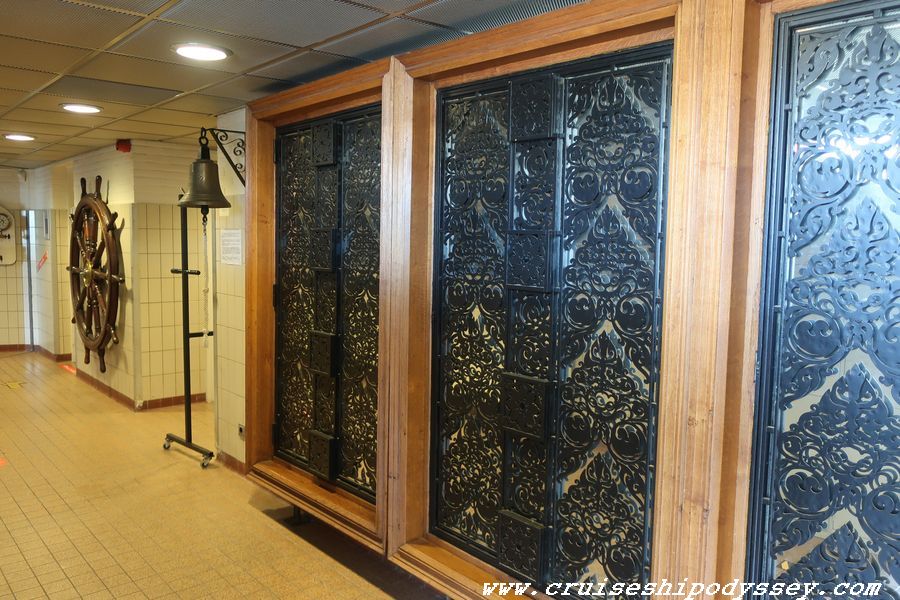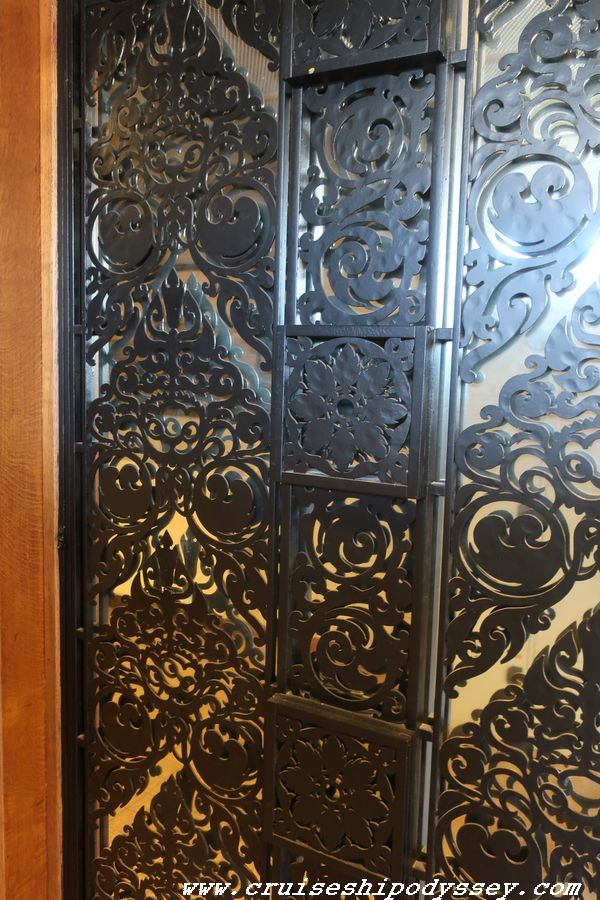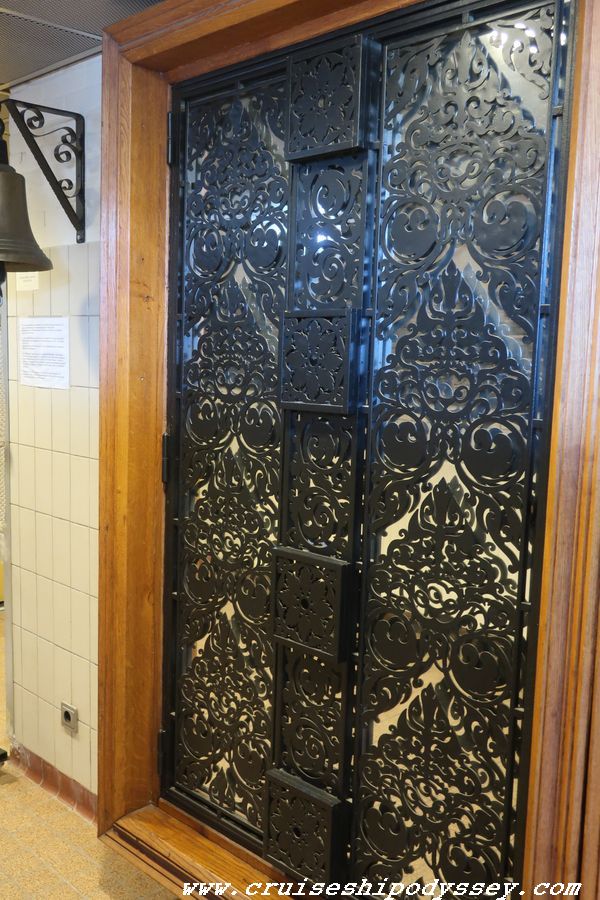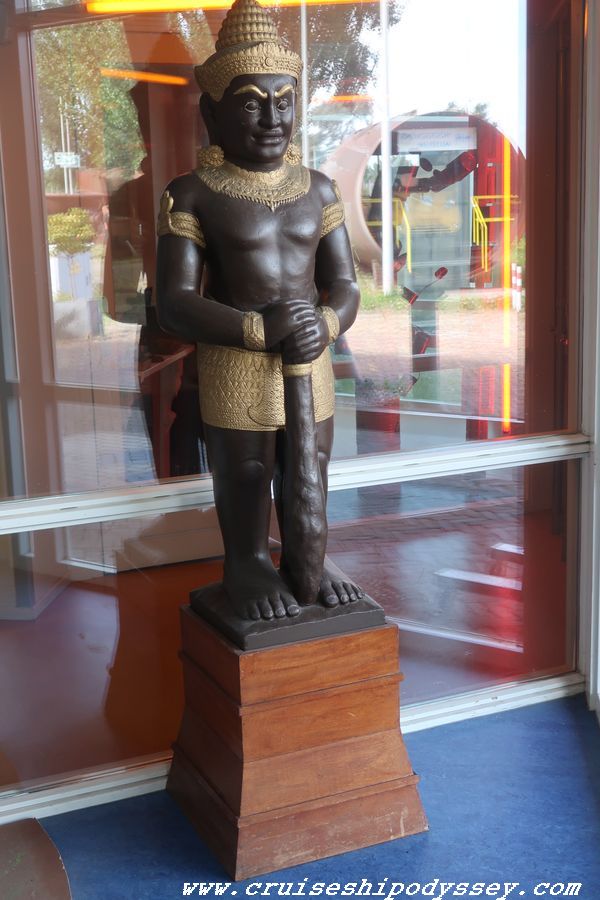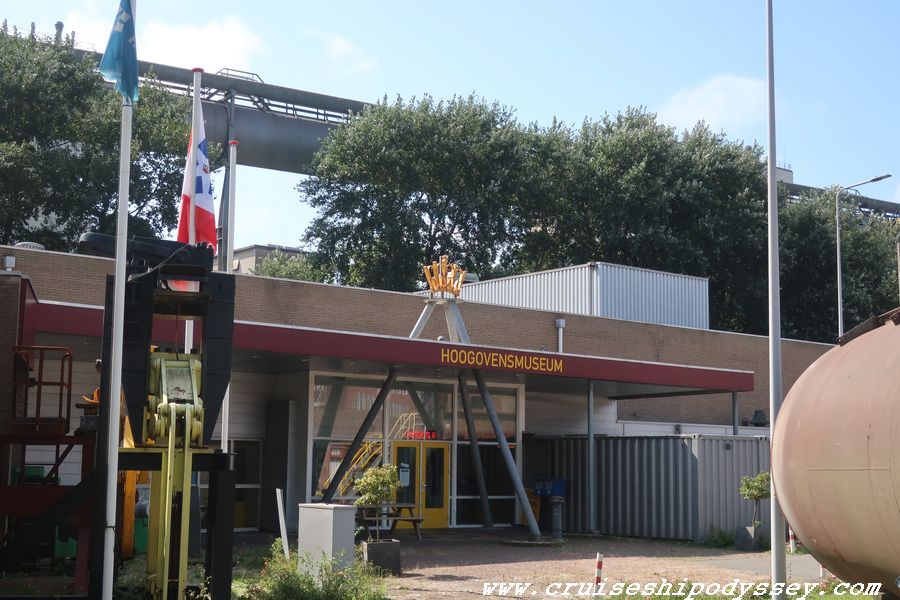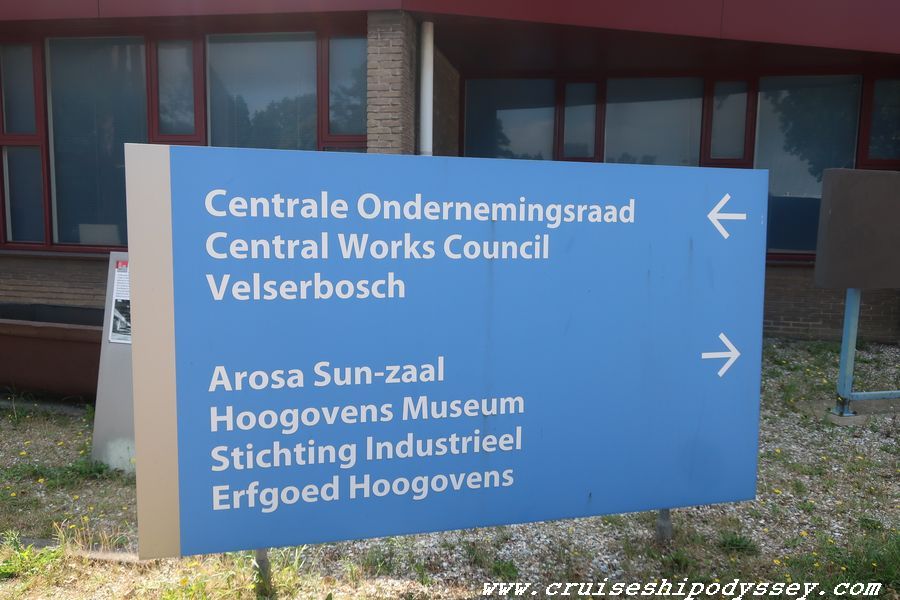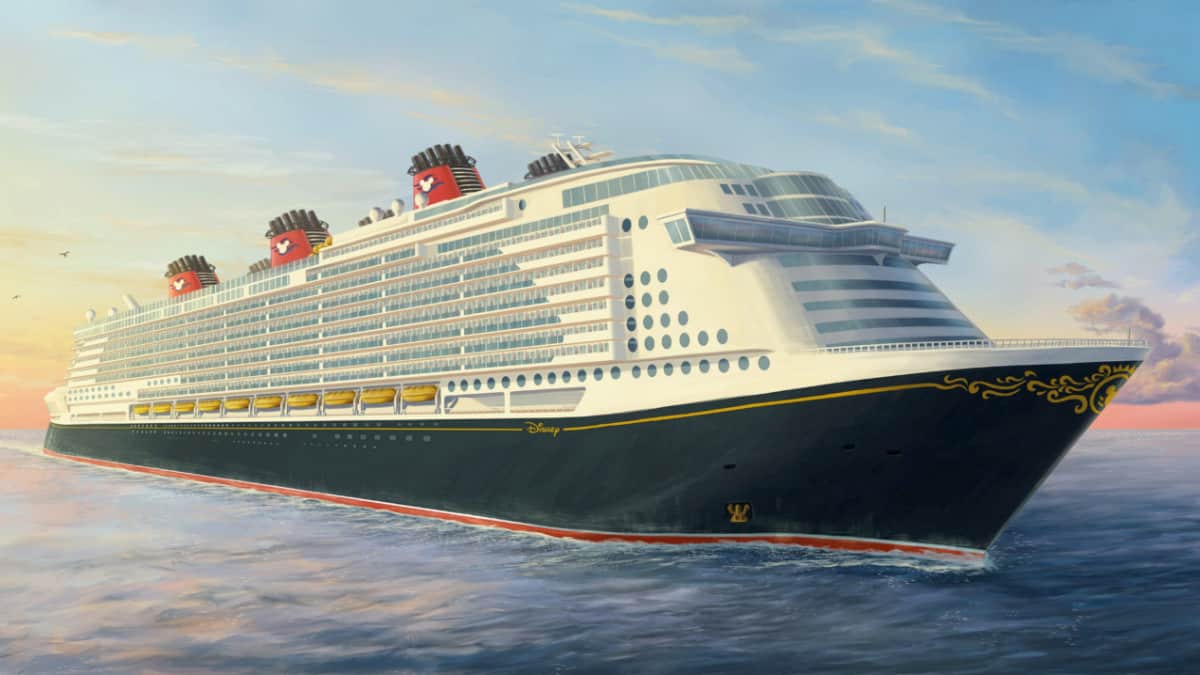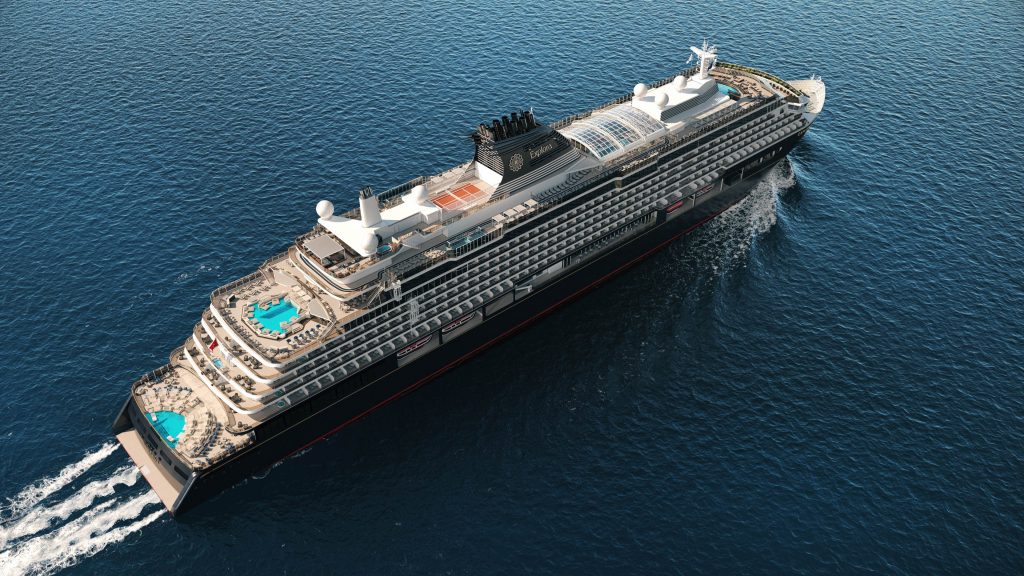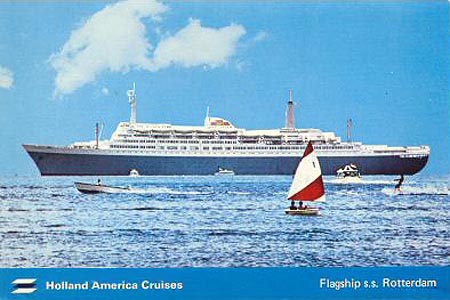Not present as a static ship anymore, but part of the interior fittings have been rescued from the ship when it went for scrap in 1974, and are still on display at the Hoogovens museum, the Hoogovens being one of the largest steel manufacturers in Europe, located in Ymuiden, The Netherlands, where the former Felix Roussel – Arosa Sun served as an accommodation ship. So we need to cover this in our static ship section.
In the early 1930’s, Messageries Maritimes ordered three sister ships for their service between France and Indochina. One of these was the Felix Roussel, a twin-screw vessel measuring 17,540GRT. She carried 1045 passengers in three classes. She was instantly recognizable by her short twin funnels. Her interiors were very luxurious for such a medium-sized vessel and were a mixture of the countries she visited, with both European (French) as well as Eastern elements. Felix Roussel sailed to Indochina until the outbreak of World War II when she was requisitioned for service as a troopship. After having been restored, she returned to service in 1948 having lost one funnel in the process. After the colonial trade declined significantly she was sold to as Swiss firm Arosa Lines and renamed Arosa Sun. They operated her on the North Atlantic service from Bremerhaven to Canada and New York, filling the gap the Germans had left after the war not having suitable tonnage available. Arosa was forced to sell its ships because of serious financial difficulties in 1959. The Dutch steel factory Hoogovens, located in Ymuiden badly needed housing for its foreign workforce from Spain and Italy at the time and they purchased the Arosa Sun for service as an accommodation ship in 1960. Apart from a small fire in 1963, she survived in this role until 1974 when she was scrapped.
Below photograph’s are from the Hoogovens Steel Factory museum in Ymuiden, The Netherlands. Its meeting room is named after the Arosa Sun and houses a beautiful model o the ship and some gorgeous panels from its first class dining room, done both in wood en metal. The tiger in the metal frame is from the banister in one of the former stairwells. The corridor leading to the Arosa Sun meeting room features a large photo of the ship docked at the Hoogovens, a panel from the engine room with pressure gauges, the ship’s bell, several more wood and metal panels from the Arosa Sun’s first class dining room and one of the three wheels which were located on its upper deck.. Finally, at the entrance of the museum, a wooden statue of which there were two originally, placed on either side of the ship’s main stairwell is on display.
